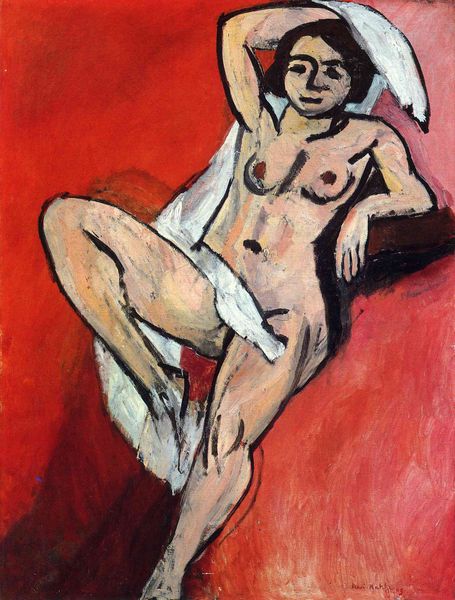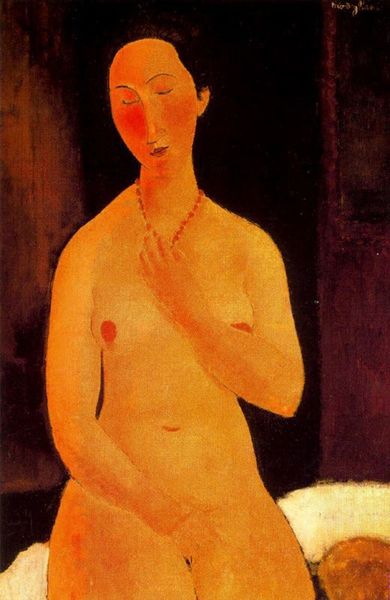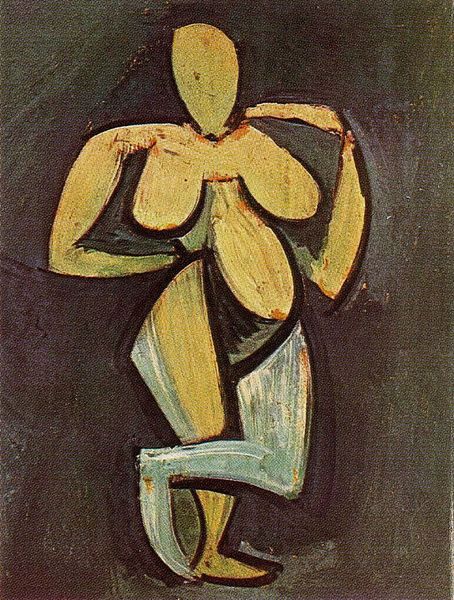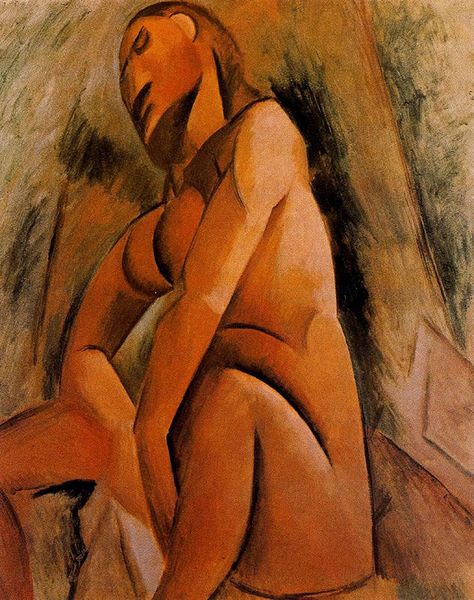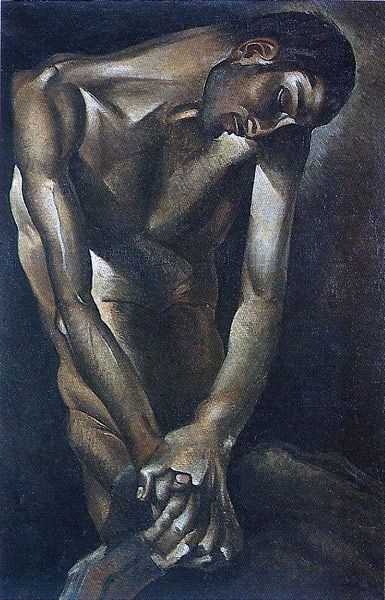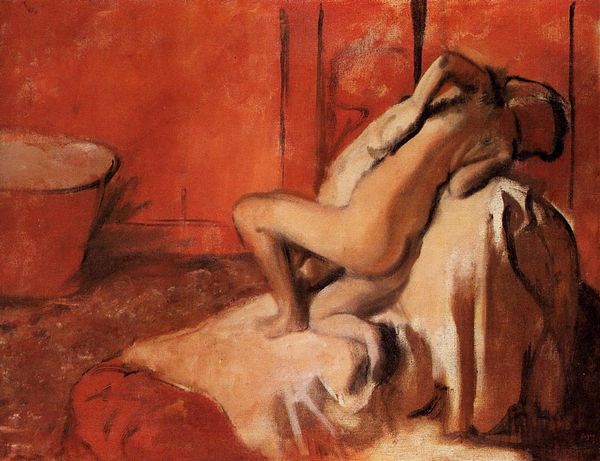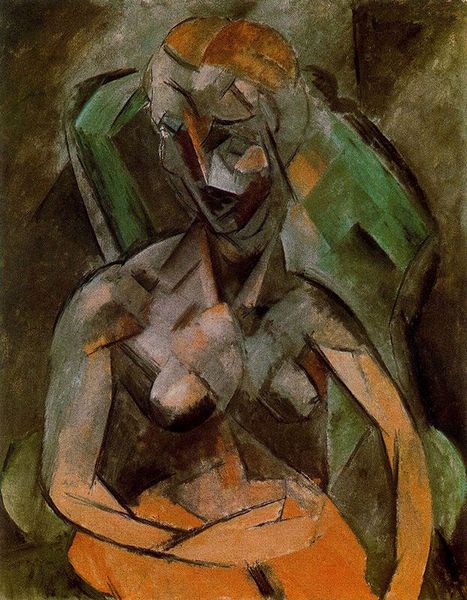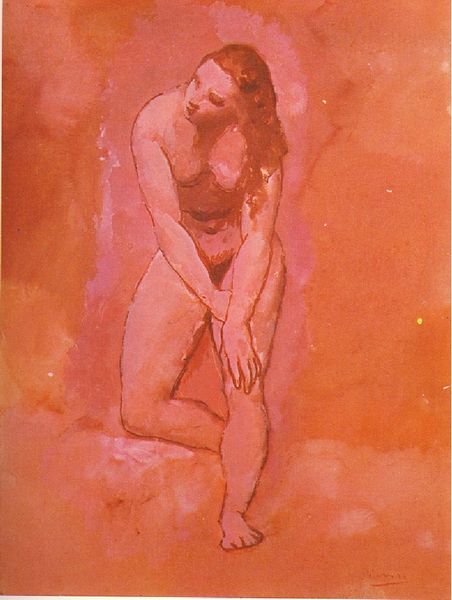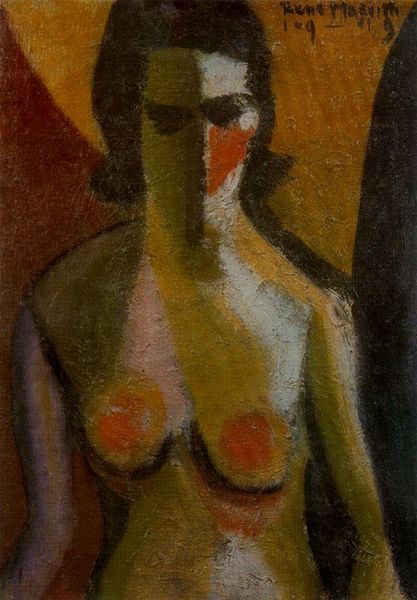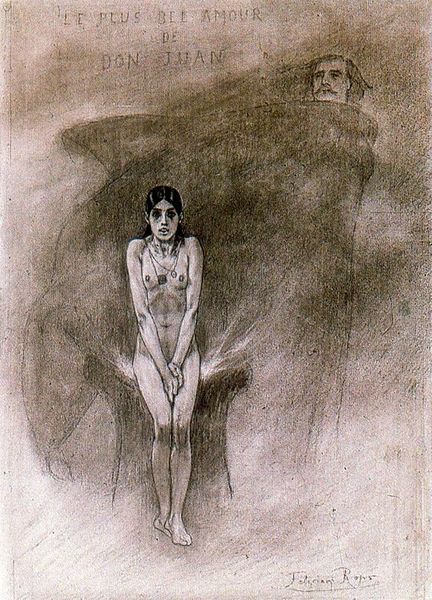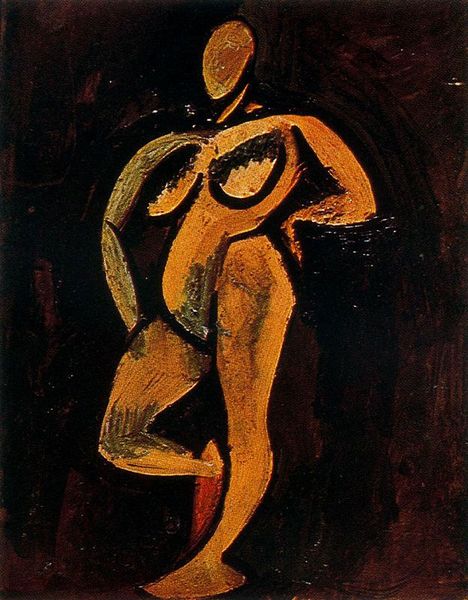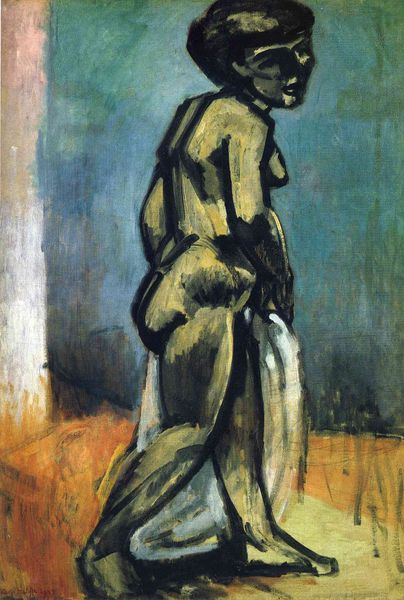
oil-paint
#
portrait
#
cubism
#
oil-paint
#
figuration
#
oil painting
#
portrait art
#
modernism
Copyright: Public domain US
Editor: This is “Seated Harlequin” by Pablo Picasso, painted in 1905 using oil paints. There's such a feeling of melancholy that emanates from the work, the pose and color choices add to this. As a historian, what jumps out at you when you view this piece? Curator: Well, the Harlequin figure itself is incredibly loaded. Throughout art history, from commedia dell'arte to the Parisian avant-garde, Harlequins appear as outsiders, often associated with poverty and social marginalization. Picasso’s choice to depict the Harlequin during his Rose Period reflects a broader interest in portraying vulnerable, often ostracized figures. What does that say about early 20th century Parisian culture, do you think? Editor: That’s an interesting angle. I guess it suggests that artists, like Picasso, saw these marginalized figures as somehow representative of the changing times. Was Picasso making a comment on the public’s role, perhaps? Curator: Exactly. The painting subtly challenges bourgeois notions of beauty and respectability. Consider how exhibitions themselves, these supposedly neutral spaces, are really shaping public perception. Picasso’s positioning the Harlequin, usually a figure of amusement, as isolated and pensive makes the viewer question what they're supposed to see, and perhaps, their own privilege. Editor: So, it’s not just a portrait of a figure, but a commentary on the act of looking and the social structures within the art world itself. Curator: Precisely. The Harlequin becomes a mirror reflecting the biases and expectations of the viewer and the system in which art is made, displayed, and consumed. A radical shift away from what was popular and considered appropriate at the time. Editor: I never considered how the simple act of viewing art can have deeper political undertones! Curator: And how context changes perception! Knowing that this was painted during Picasso's rose period certainly informs how we react to this powerful and thought provoking piece.
Comments
No comments
Be the first to comment and join the conversation on the ultimate creative platform.
